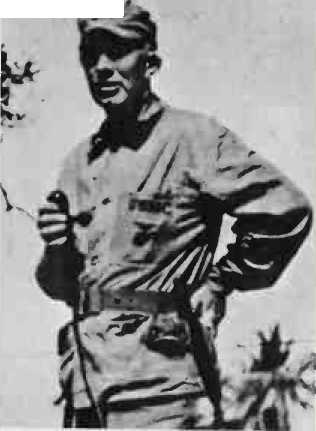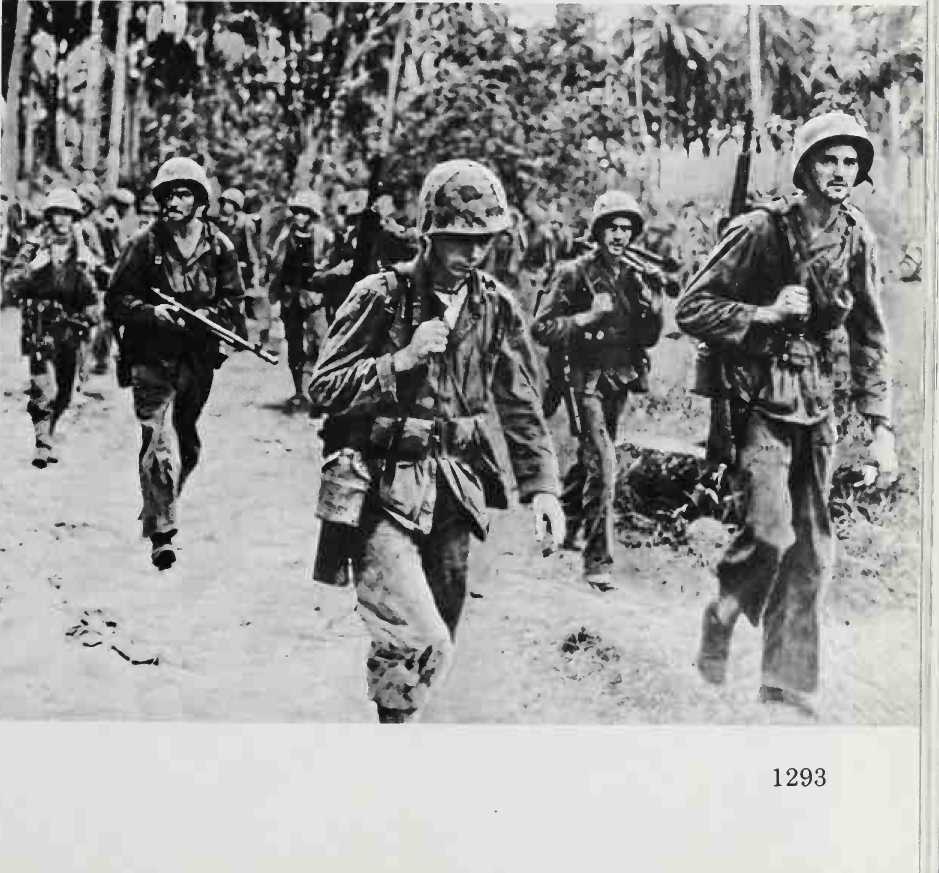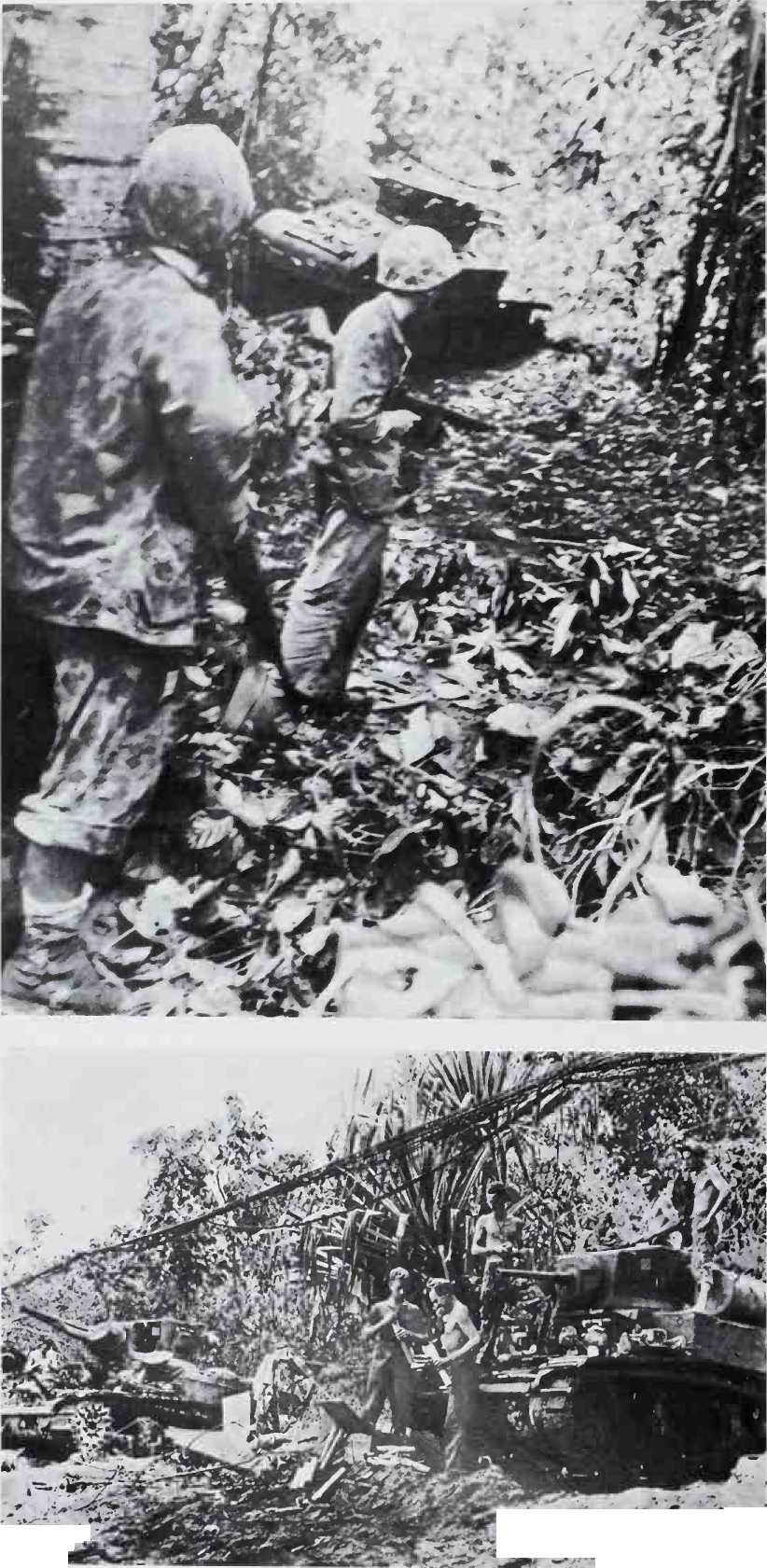The importance of this was greater than perhaps they realised. Halsey’s victories in the Solomons had been matched by impressive advances by MacArthur in New Guinea. As a result, the Joint Chiefs-of-Staff had concluded that it would be more advantageous to bypass and neutralise Rabaul than to capture it, thus freeing large forces for a more rapid drive on targets closer to Japan itself. Thisdecision, ratified by Allied military leaders in late August 1943, left Bougainville as the last obstacle for Halsey to overcome before he could push on beyond Rabaul.
While American heavy bombers struck fiercely at Japanese air bases in the Bougainville area in late September, Halsey was planning his assault. There were about 40,000 Japanese soldiers on Bougainville, commanded by General Hyakutake, of Guadalcanal fame, as well as an additional 20,000 navy troops. Allied Intelligence had a fairly good appreciation of this strength, and Halsey, after his successful bypassing of Kolombangara, decided to attempt a similar strategy on Bougainville. What he sought was an air base from which Rabaul could be neutralised and from which the Japanese supply line between Rabaul

A Marine commander on Bougainville, Major-General Allen H. Turnage, gives his men some well-earned praise after the battle of Cape Torokina.
V The Marine advance continues, with the strain of combat beginning to show.


And the Solomons could be severed. It was not necessary to crush all of Hyaku-take’s forces: only to bypass and isolate them. And this is exactly what Halsey proposed to do.
With most of the Japanese concentrated in southern Bougainville and at the island’s northern tip, the practically undefended Empress Augusta Bay area, midway up the west coast, seemed an attractive target. The landing date was set for November 1, with the I Marine Amphibious Corps under General Vande-grift, who had also cut his combat teeth at Guadalcanal, given the assignment.
During October, American bombers continued to punish Japanese airfields on Bougainville, knocking out the last of them by the end of the month. To confuse the Japanese further, in the pre-dawn hours of October 27, a small force of New Zealand troops occupied the Treasury Islands, south of Bougainville. Then, later in the day, a battalion of U. S. Marines landed on the large island of Choiseul, to the east. This was merely a raid, to mislead the Japanese about American intentions, but in the week before they were evacuated the Marines stirred up enough trouble to make the defenders believe they had come to stay.
Whatever the effect of the Treasury and Choiseul landings, when the 3rd Marine Division landed on the north shore of Empress Augusta Bay early on November 1, there was very little opposition. Since the terrain around the bay was low and wet, the Japanese thought it unsuitable for offensive operations by an invader and thus ruled out the chances of an American landing there. General Hyaku-take had stationed less than 300 men in the area, and these outnumbered troops were quickly overwhelmed by the attacking Marines. Within a few hours, Vande-grift’s men had secured the area.
The Japanese counter-attack came by air and sea. Almost immediately, Rabaul-based bombers and fighters struck at the landing force, only to be driven off with heavy losses by defending American aircraft. At the same time, a strong cruiser-destroyer force sped down from Rabaul, hoping to smash American warships in a repeat of the Savo Island victory of the Guadalcanal campaign. The naval attack was also intended to cover the landing of Japanese ground troops at Empress Augusta Bay. But this time the Americans were ready. In the Battle of Empress Augusta Bay on the night of August 1-2, the Japanese were driven off, with slightly heavier losses than those sustained by the American vessels. Repeated Japanese air attacks the next day were also defeated.




 World History
World History









